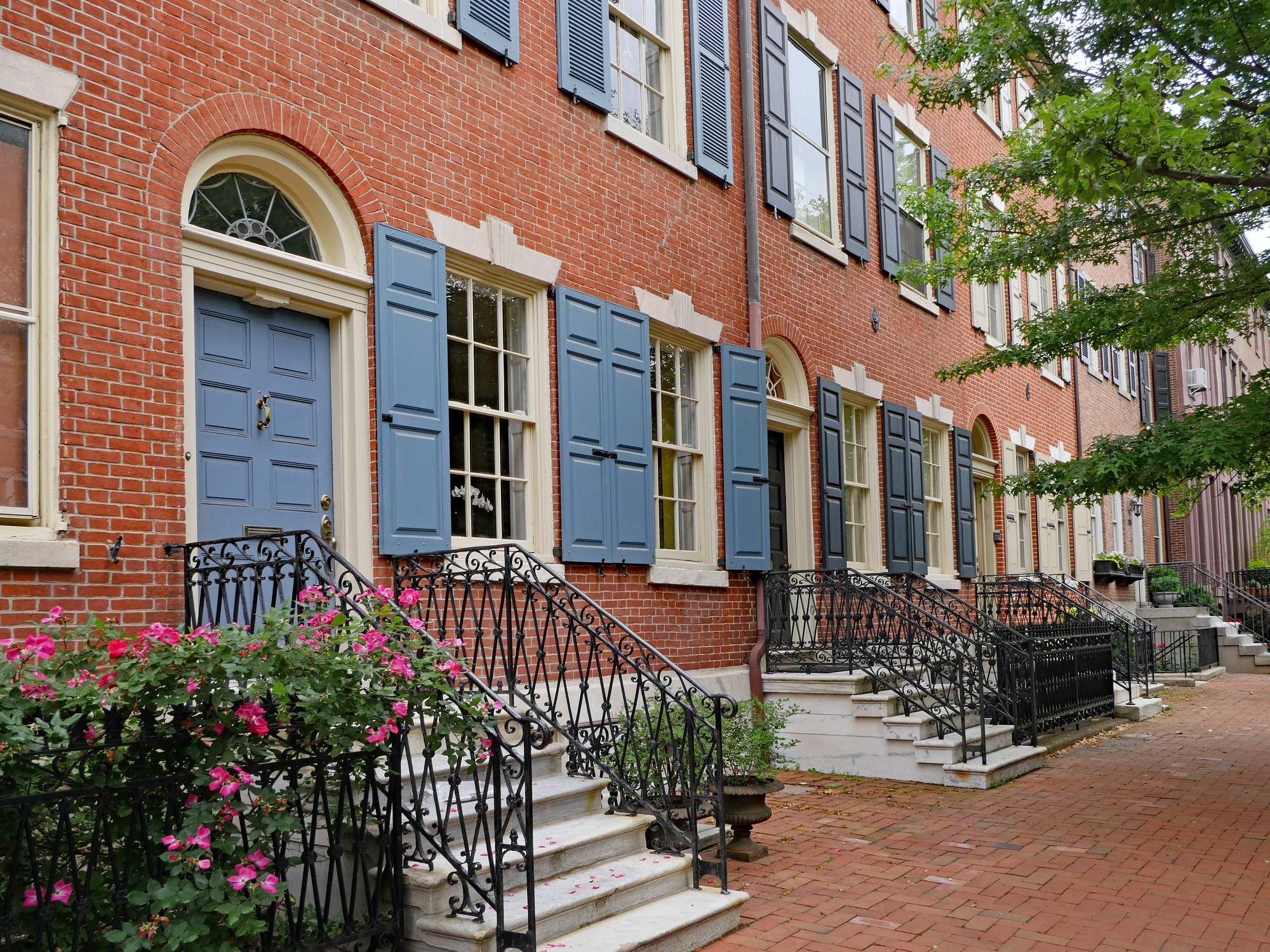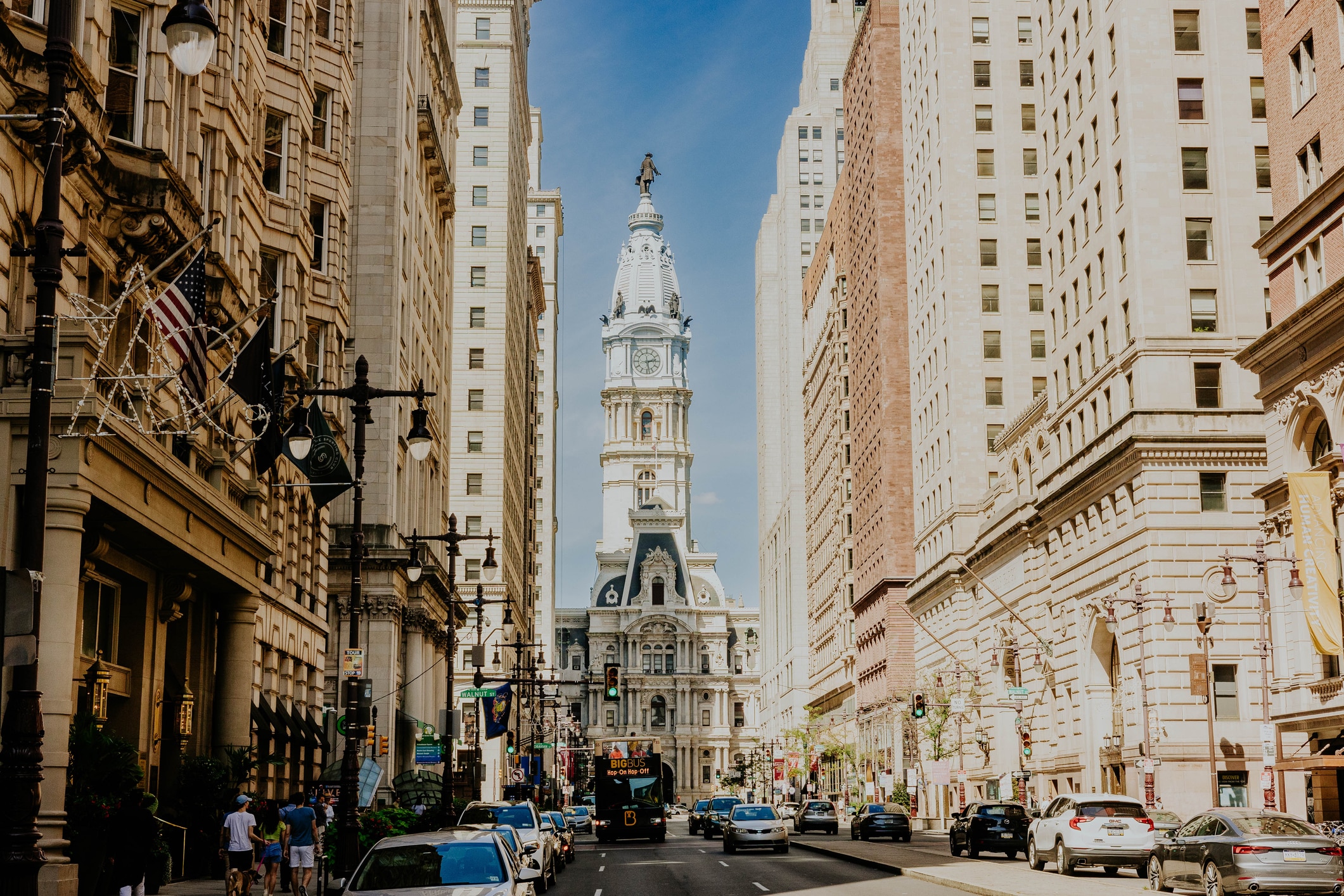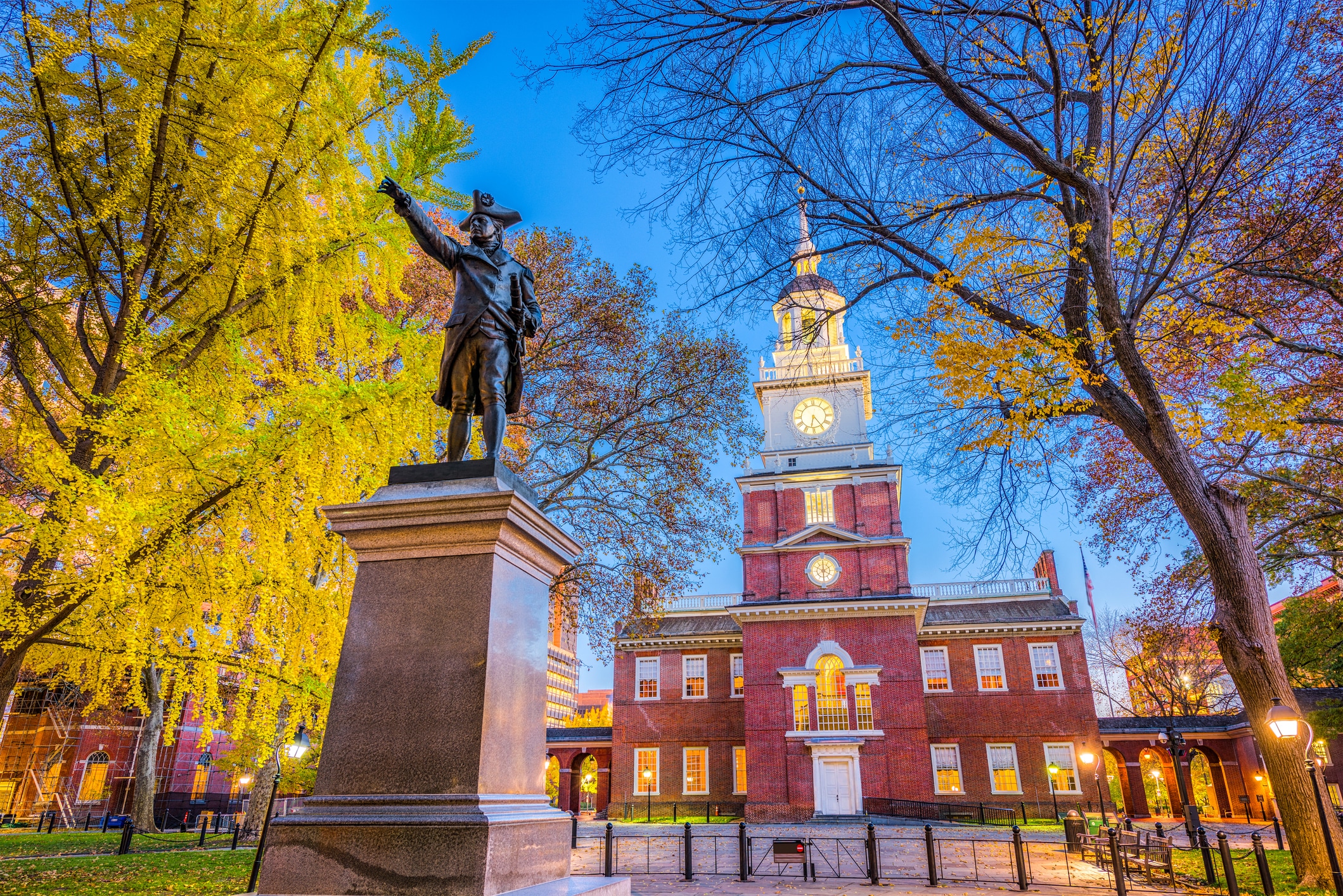(Updated March 14, 2025)
If you’re moving to Philadelphia, get ready to adopt some pride. Living in the City of Brotherly Love means diving into a culture that runs on soft pretzels, heckles its own sports teams, and will absolutely debate you on the best cheesesteak.
Philly may have some quirks and rough edges, but it’s also got history, culture, and an energy that keeps people coming.
It’s no surprise, then, that moving to Philadelphia has become a popular choice in recent years, with people relocating from cities like New York, Washington, D.C., and even Los Angeles in search of lower housing costs and a high quality of life. Whether you're drawn to its walkable neighborhoods, strong job market, or the fact that you can get a hoagie at nearly any hour, there’s a lot to love.
In this guide, we’ll cover everything you need to know before packing up and moving to Philadelphia, PA — from the cost of living in Philadelphia and the best places to live in Philadelphia, to job opportunities, fun things to do, and the pros and cons of living in Philadelphia.
Philadelphia: Quick Facts
Population: 1.5 Million
Median age: 34.8
Cost of living: 6% higher than the state average and 2% higher than the national average
Median income: $60,698
Average home value: $216,914
Average rent: $1,958
Fun fact #1: Philadelphia is home to the nation’s first-ever zoo, hospital, and library — because if there’s one thing this city loves, it’s being first.
Fun fact #2: The Liberty Bell has been cracked for over 175 years, but that hasn’t stopped millions of people from visiting it every year.
8 Things To Know Before Moving to Philadelphia

Philadelphia isn’t just a city. It’s a personality. Here, you’ve got the grit of a blue-collar town, the charm of a historic settlement, and the attitude of a sports fan who’s seen too much. (Get ready to argue with your neighbors about the direction of the 76ers.) Before you pack up and head to Philadelphia, there are 8 things you should know first:
1. The cost of living in Philadelphia is higher than the state average but lower than New York
The cost of living in Philadelphia is about 6 percent higher than Pennsylvania’s average and 2 percent above the national average. While that makes it more expensive than other cities in the state, it’s still far more affordable than places like New York or Washington, D.C. Housing, in particular, keeps costs down — median home prices hover around $216,914, while average rent sits at $1,958.
Compare that to New York City, where median home prices exceed $752,778 and rents average over $2,739, and, well, Philly starts to look like a bargain. Of course, like most cities, Philadelphia’s living costs have been creeping up, driven mainly by rising utility and transportation expenses. Housing, by contrast, has remained relatively stable compared to other major metros. That makes a big difference in monthly costs.
But how much do you really need to live comfortably in Philadelphia? For a single person, a salary of around $70,000 should cover rent, food, and basic expenses with some room to save. Families will need more, especially if homeownership is the goal. While Philly isn’t the cheapest city in the country, it offers big-city amenities without the extreme price tags of its East Coast neighbors.

2. Philadelphia’s climate brings all four seasons, and then some
Philadelphia gives you a little bit of everything when it comes to weather. Summers crank up the heat, with temperatures regularly hitting the high 80s and humidity making it feel even hotter. Winters, on the other hand, bring chilly temps and occasional snowstorms, though Philly doesn’t see as much snow as cities farther north like New York or Boston. Spring and fall are the city’s sweet spots — mild temperatures, changing leaves, and a break from the extremes.
That said, expect some weather curveballs regardless of what the calendar says. Nor’easters can dump heavy rain or snow, and the occasional hurricane remnant sweeps up the coast, bringing strong winds and flooding. Summer thunderstorms are fast and intense, often rolling in out of nowhere. If you’re moving to Philadelphia, be ready for all four seasons, and some unpredictability to boot.
3. Crime and safety in Philadelphia depend on the neighborhood
Philadelphia's crime rate stands at 61 incidents per 1,000 residents, significantly higher than both state and national averages. This means residents have a 1 in 16 chance of becoming a victim of either violent or property crime.
However, like any other city, safety in Philadelphia varies widely by neighborhood. Some areas experience higher crime rates, while others are considered relatively safe.
Safest Philadelphia neighborhoods:
Wissahickon Park
Pennypack Park
Chestnut Hill
(Source)
Most dangerous Philadelphia neighborhoods:
Kensington
Fairhill
Harrowgate
(Source)
4. Philadelphia’s housing market remains affordable compared to other East Coast cities
As of early 2025, the average home value in Philadelphia is $216,914, a 3.8% increase from last year. Despite this rise, moving to Philadelphia remains far more affordable than buying in the most expensive housing markets, like New York, where the median home price exceeds $750,000. Even Boston and Washington, D.C., have significantly higher housing costs than Philadelphia. The city’s mix of historic rowhomes, new construction, and relatively low property taxes continues to attract buyers looking for more space without the sky-high price tag.
The demand for housing has grown, partly due to an influx of New Yorkers moving to Philadelphia for a lower cost of living and an easier commute. Looking ahead, there’s moderate price growth prediction through 2025, keeping Philly one of the more competitive housing markets in the region.
5. Renting in Philadelphia offers options for every budget
For those moving to Philadelphia, rental prices offer something for nearly every budget. As of early 2025, the average rent in Philadelphia is $1,958 per month, slightly above the national average.
According to Apartments.com, a one-bedroom rents for around $1,710, while a two-bedroom averages $2,170. Compared to other major East Coast cities, Philly remains an affordable option, though prices vary significantly by neighborhood.
6. The job market in Philadelphia is strong in healthcare, education, and tech
If you’re moving to Philly, you’ll find a ripe employment market — at least for now. Philadelphia's job market is anchored by robust sectors such as healthcare, education, and technology. In particular, the education and health services sector experienced the largest growth in 2024, adding 33,900 jobs over the past year, with healthcare and social assistance contributing 29,800 of these positions. This 4.9% increase outpaces the national average of 3.9% in the same sector.
Moreover, the professional and business services sector also saw gains. Notably, workers in this sector experienced wage increases of 6.5%, reflecting a healthy demand for professional services. As of December 2024, the unemployment rate in Philadelphia stood at 4.4%, slightly below the long-term average of 6.05%. While employment opportunities are growing, wages in Pennsylvania have not kept pace with inflation.
7. The best places to live in Philadelphia offer something for everyone
The City of Brotherly Love is not shy when it comes to character. Each of Philadelphia’s neighborhoods offers its own charm and amenities (not to mention aggressive Eagles fandom). Whether you're moving to Philadelphia with a family or as a young professional, or you’re just looking for a new adventure, Philly has something to offer.
Fitler Square: Ideal for families
Looking to raise a family in Philadelphia but avoid the suburbs? Head to Fitler Square. Tucked away on the western edge of Center City, this is a quiet, family-friendly neighborhood that offers the best of both worlds — charming, tree-lined streets and just a short walk from Downtown. The area is known for its schools, spacious parks, and a strong sense of community. Plus? The Schuylkill River Trail is just steps away.
Fishtown: Perfect for young professionals
Simply put, Fishtown is one of the coolest neighborhoods in Philadelphia. Situated northeast of Center City, this neighborhood offers a mix of modern apartments and renovated row homes. With excellent nightlife, an eclectic arts scene, great restaurants, music venues, and coffee shops, you’ll find what you want as a young professional.
Roxborough: Safe and affordable living
For those prioritizing safety and affordability, Roxborough presents an excellent option. Located adjacent to Manayunk, this neighborhood offers a suburban feel within city limits. Residents appreciate the area's access to parks like the Wissahickon Valley Park and a variety of local businesses and restaurants.
8. Philadelphia offers endless things to do
If you live in Philly, you’ll have to try hard to be bored. The city’s rich history and cultural scene is always pumping with stuff to do. Here’s a quick look at some fun things to do in Philadelphia:
Explore Eastern State Penitentiary: Tour this historic prison, once home to notorious criminals like Al Capone, and delve into its intriguing past.
Visit the Mütter Museum: Discover a fascinating collection of medical oddities, anatomical specimens, and historical medical instruments.
Stroll Down Elfreth's Alley: Walk along a street that’s older than America itself, dating back to 1703, and admire its preserved 18th-century architecture.
Experience Philadelphia's Magic Gardens: Find a mesmerizing mosaic art environment created by artist Isaiah Zagar.
Wander through the Italian Market: Savor the sights, sounds, and flavors of one of the nation's oldest and largest open-air markets.
Tour the Edgar Allan Poe National Historic Site: There aren’t just Eagles in Philadelphia, but ravens too. Visit the former home of the famed writer and explore exhibits dedicated to his life and works.
Relax at Shofuso Japanese House and Garden: Enjoy the tranquility of this traditional Japanese house and garden and absorb the history of Japanese culture in Philadelphia.
Is Philadelphia, PA, a good place to move to?
Philadelphia offers a blend of affordable living, rich cultural experiences, and diverse job opportunities, making it a great place to move to. The city's cost of living is slightly above the national average but remains more affordable than neighboring East Coast metros like New York City.

Pros and Cons of Living in Philadelphia
Of course, like any major city, living in Philadelphia comes with its perks and its challenges. Whether you’re drawn in by the historic charm, the cost of living in Philadelphia, or its booming job market, weigh the full picture before making the move. Below, we break down some of the key pros and cons of living in Philadelphia so you know exactly what to expect.
Pros of living in Philadelphia
Philadelphia’s cost of living is lower than in other major East Coast cities. While the city isn’t cheap, it’s far more affordable than others.
The job market in Philadelphia is growing, especially in healthcare, education, and tech. Major employers like Penn Medicine, Comcast, and Temple University offer strong career opportunities across multiple industries.
Public transportation makes getting around the city easy and affordable. SEPTA’s extensive bus, train, and subway system connects neighborhoods efficiently, helping residents commute without relying on a car.
There are endless fun things to do in Philadelphia year-round. Run the Rocky Steps or explore historic landmarks—why not?
Cons of Living in Philadelphia
Certain neighborhoods struggle with high crime rates. While many areas are safe, there are some, like Kensington and Fairhill, where crime is a concern.
The city’s infrastructure can feel outdated, with potholes and aging public transit. While SEPTA is convenient, it doesn’t always match the efficiency of transit systems in places like New York or D.C.
Winters can be unpredictable, with cold snaps, snow, and nor’easters. If you’re not a fan of chilly, gray months, be prepared to bundle up and navigate occasional icy sidewalks.
The job market is competitive, and wages don’t always keep pace with rising living costs. While opportunities exist, salaries in Philadelphia can sometimes lag behind other major metros, especially in tech and finance.
Ready to Make Philly Home? Here’s Your Next Move
Philadelphia has a lot to offer — affordable housing (at least compared to its East Coast neighbors), a strong job market, and a food scene that takes cheesesteaks as seriously as it does fine dining. But it’s not perfect. The winters can be rough, some neighborhoods have higher crime rates, and let’s just say the roads aren’t exactly designed with smooth driving in mind. But if you can handle the quirks, living in Philadelphia can be a rewarding experience.
Is moving to Philadelphia in your future? If so, make the process easier with Colonial Van Lines. With over 50 years of experience in long-distance moving, our team expertly handles everything from packing and loading to transportation and unloading. Skip the hassle and get a free quote today — because figuring out how to parallel park in Center City is stressful enough.

